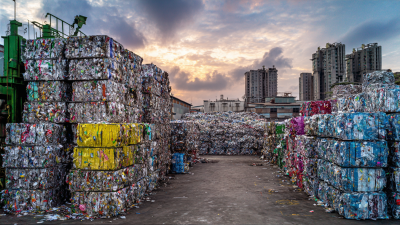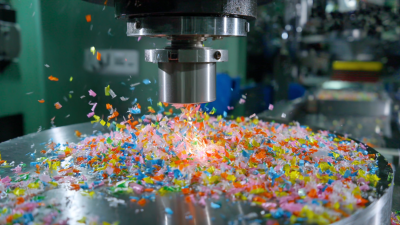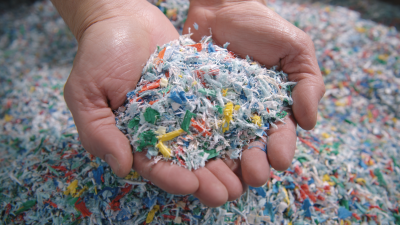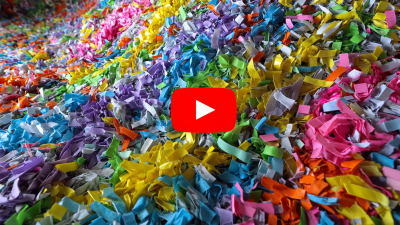 In the quest for a sustainable future, the role of plastic waste shredders has emerged as a pivotal element in modern recycling processes. With the global plastic waste management market anticipated to reach $42 billion by 2028, the demand for efficient plastic waste shredding solutions is more paramount than ever. According to a report by the National Association for Plastic Container Recovery, approximately 75% of plastic bottles are recyclable, yet less than 30% are actually recycled. This discrepancy highlights the urgent need for improved waste processing technologies, particularly plastic waste shredders, which not only enhance the efficiency of recycling operations but also facilitate the transformation of waste into valuable materials.
By breaking down plastics into manageable sizes, these machines play a crucial role in mitigating environmental impact, promoting resource recovery, and supporting the circular economy. Thus, understanding the essential function of plastic waste shredders is vital for any strategy aimed at revolutionizing recycling efforts worldwide.
In the quest for a sustainable future, the role of plastic waste shredders has emerged as a pivotal element in modern recycling processes. With the global plastic waste management market anticipated to reach $42 billion by 2028, the demand for efficient plastic waste shredding solutions is more paramount than ever. According to a report by the National Association for Plastic Container Recovery, approximately 75% of plastic bottles are recyclable, yet less than 30% are actually recycled. This discrepancy highlights the urgent need for improved waste processing technologies, particularly plastic waste shredders, which not only enhance the efficiency of recycling operations but also facilitate the transformation of waste into valuable materials.
By breaking down plastics into manageable sizes, these machines play a crucial role in mitigating environmental impact, promoting resource recovery, and supporting the circular economy. Thus, understanding the essential function of plastic waste shredders is vital for any strategy aimed at revolutionizing recycling efforts worldwide.
The importance of plastic waste shredders in recycling processes cannot be overstated, especially as the world grapples with the mounting crisis of plastic pollution. These machines serve a critical function by efficiently breaking down plastics into manageable sizes, which significantly enhances the sorting and processing stages in recycling operations. By transforming discarded plastic materials into reusable feedstock, shredders not only streamline recycling but also contribute to the emergence of a circular economy. This innovation allows old products to gain new life, minimizing waste and conserving valuable resources.

Bioconjugates are further advancing the recycling landscape by offering new methods for waste management that effectively combat environmental concerns. By integrating biological materials with plastics, these cutting-edge solutions improve the recyclability of existing products and enable their transformation into high-value applications. As industries rethink waste as a resource rather than a burden, the role of advanced technologies, including shredders and bioconjugates, becomes increasingly vital in fostering sustainable practices. This holistic approach is essential to address the pressing challenges posed by plastic waste and ensure a healthier planet for future generations.
When selecting an efficient plastic waste shredder, several key features must be considered to ensure optimal performance and sustainability. Firstly, the cutting mechanism is crucial; a high-quality shredder should have durable blades made of hardened steel or similar materials, allowing it to effortlessly handle various types of plastics.
Additionally, adjustable cutting settings can enhance flexibility, enabling the machine to accommodate different sizes and thicknesses of waste.
Another important aspect is the shredder’s motor power and capacity. A powerful motor ensures consistent performance even during heavy-duty operations, while a robust design can handle larger volumes of plastic waste efficiently. Furthermore, features such as noise reduction and energy efficiency technologies can contribute to a more sustainable recycling process, minimizing environmental impact. Lastly, ease of maintenance is essential; a user-friendly design allows quick access to parts, ensuring that the shredder can be kept in optimal condition without excessive downtime. By focusing on these key features, businesses can significantly enhance their recycling efforts.
Efficient recycling of plastic waste is crucial in addressing environmental challenges, and shredders play a pivotal role in maximizing this process. By breaking down large plastic items into manageable pieces, shredders facilitate the subsequent steps in recycling, such as sorting and melting. To make the most of shredders, it's important to follow best practices that enhance performance and longevity.
One essential tip for effective shredder use is to regularly maintain the equipment. This includes checking blades for sharpness and cleaning out residual materials to prevent jams. Ensuring proper lubrication of moving parts will also optimize performance and reduce wear and tear. Additionally, operators should be trained to understand the specific capabilities and limitations of their shredders, which can lead to safer and more efficient workflows.
Another best practice is to sort plastics before shredding. Different types of plastics require unique shredding processes and temperatures for optimal recycling. By categorizing materials beforehand, recyclers can reduce cross-contamination and improve the quality of the output, making it more appealing to buyers in the recycled materials market. Implementing these strategies not only enhances recycling efficiency but also contributes to a more sustainable future.
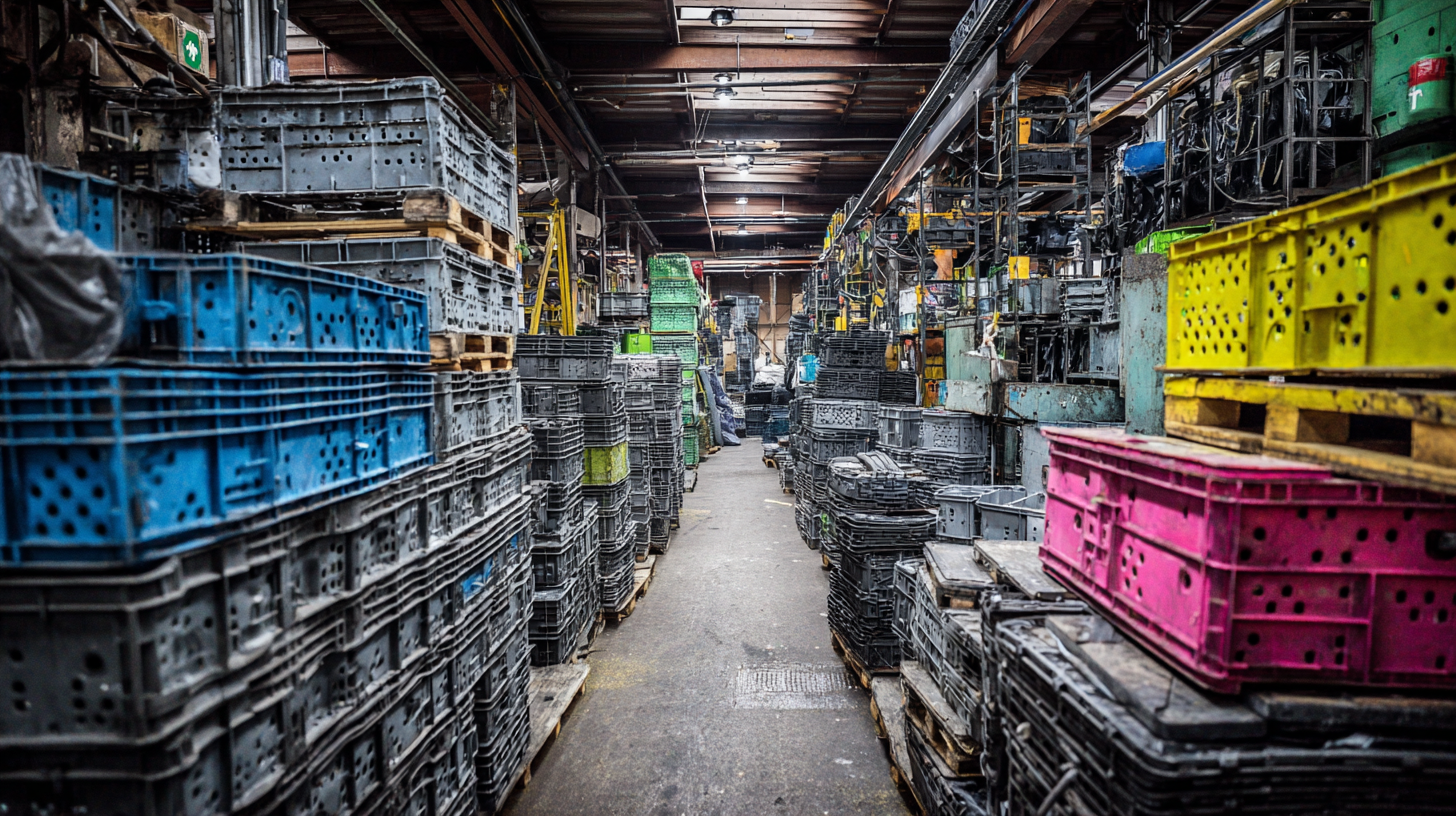
Plastic waste is a pressing environmental challenge, with about 300 million tons produced globally each year, according to the United Nations Environment Programme. The impact of improper disposal is profound, as millions of tons of plastic end up in oceans and landfills, leaching harmful chemicals and threatening wildlife. Shredding plastic waste before recycling not only reduces its volume, but also enhances the efficiency of the recycling process. For instance, research indicates that pre-shredded plastic can improve the quality of recycled materials by up to 30%, facilitating better processing and reuse.
The role of plastic waste shredders in sustainable solutions cannot be understated. They enable effective sorting and processing of materials, leading to higher recycling rates. According to a report by the Ellen MacArthur Foundation, transitioning to a circular economy that incorporates shredding technologies could eliminate approximately 30% of plastic waste by 2030. Moreover, shredding aids in the separation of different plastic types, thus increasing overall recovery rates from 9% to nearly 50%, as highlighted in a 2021 study by the World Economic Forum. This transformation not only mitigates environmental impact but also promotes the development of a sustainable plastic waste management system.
Shredding plastic waste significantly enhances recycling efficiency by increasing the surface area for subsequent processing steps. This chart illustrates the comparison of recycling efficiency before and after incorporating plastic shredders, highlighting a substantial increase from 25% to 75%.
Innovative technologies play a crucial role in enhancing plastic waste shredding solutions, significantly impacting recycling processes. Modern shredders are equipped with advanced sensors and automation, enabling them to efficiently process a wide variety of plastics while minimizing energy consumption. These smart shredders can automatically adjust their operations based on the type and thickness of the material being fed in, ensuring optimal performance and reducing wear and tear. This adaptability not only increases throughput but also enhances the overall quality of the shredded material, making it more suitable for recycling.
Moreover, the integration of artificial intelligence and machine learning into shredding technologies has been a game-changer. These systems can analyze data in real-time, allowing for the identification of contamination levels in plastic waste and optimizing the shredding parameters accordingly. By improving sorting accuracy and processing efficiency, this innovation supports the production of high-quality recycled plastics, which is essential for closed-loop recycling models. As these technologies continue to evolve, they pave the way for more sustainable and effective recycling practices, contributing to the reduction of plastic waste in our environment.

